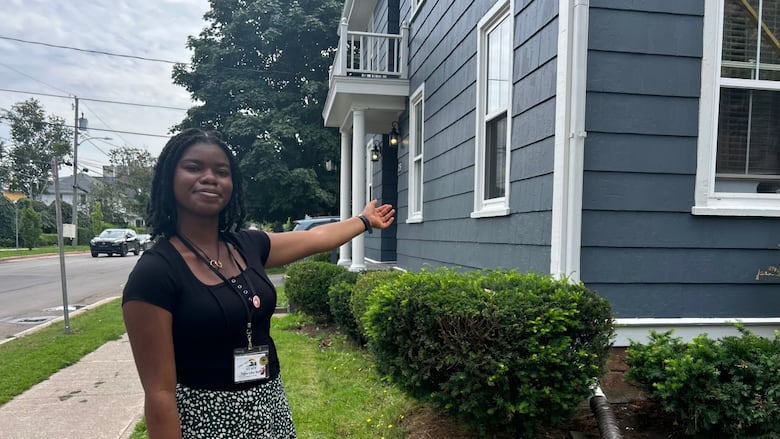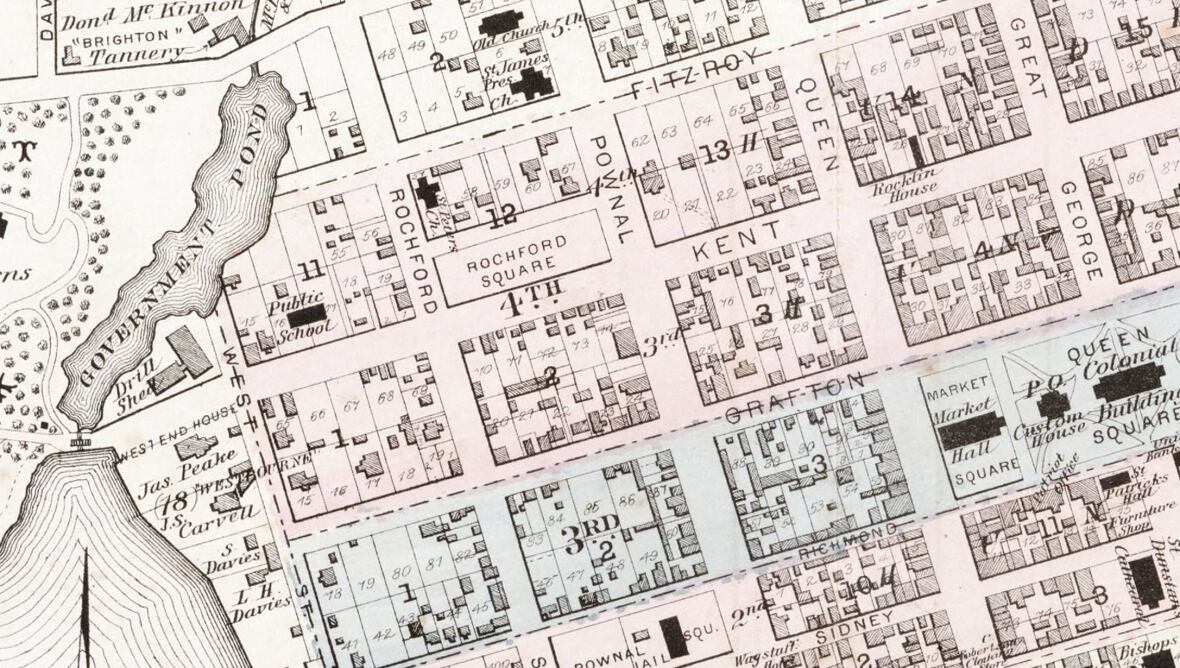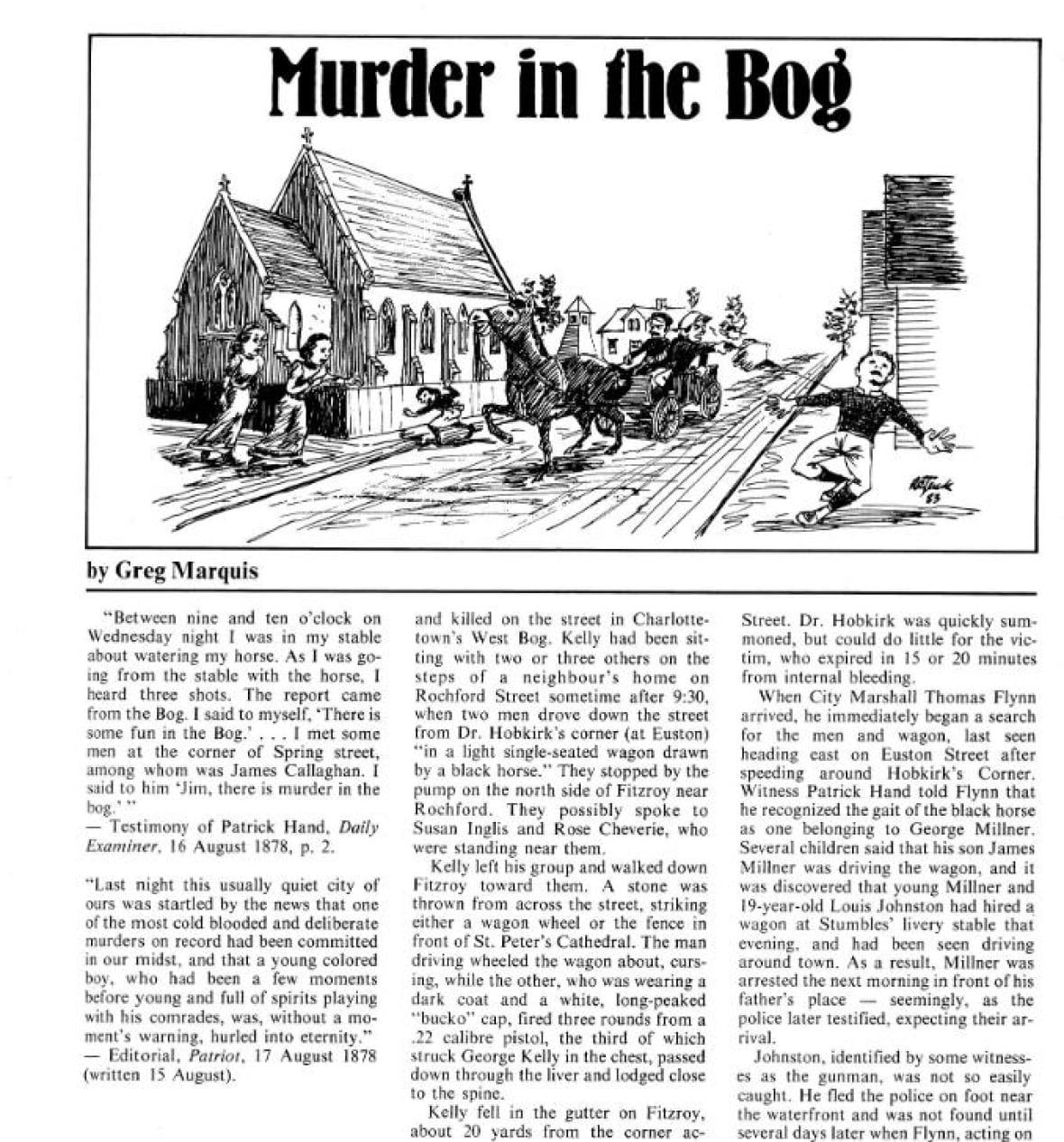The Bog tour keeps memories of P.E.I.'s forgotten Black neighbourhood alive
'It is important that the story... should be given out to the community,' says interpreter

CBC's Island Morning is presenting a weekly summer feature, speaking to different tour guides around Prince Edward Island about the tours they give and why you should take them. This piece was prepared for the third week.
The Bog was once a Black neighbourhood in Charlottetown spanning from Euston Street to Pownal, Richmond and West streets near Government Pond, which has since been built over and forgotten by many Islanders.
But these days, a historical tour through the area gives Islanders and visitors more insight about Black history on Prince Edward Island. The tours are administered through the P.E.I. Museum and Heritage Foundation.
The tour starts at Beaconsfield Historic House on Kent Street and goes in a loop to Government House, past the pond and then east toward the parkade on Pownal Street. It then travels to All Souls' Chapel and Rochford Square before heading back to the starting point.
Tayo Ajibaibi, the tour's interpreter, said there isn't much evidence of the Bog remaining, so she tries to give people a sense of the geography of the neighbourhood.
"Eighty-five per cent of the people we get are... locals. They want to come, they want to learn more about the history of P.E.I.," she said.
"We do get some people who push back about that kind of history, but at the end of the tour, there is a drastic change of them accepting that part of our story."

History of the Bog
According to the Canadian Encyclopedia, the Bog's first residents arrived in the 1780s and were made up of Loyalists and small group of enslaved Black people.
The area was seen as undesirable by wealthier residents due to it being low lying and marshy.
The neighborhood began to take shape around 1812 when Samuel Martin, a freed slave known as "Black Sam," petitioned the Island's executive council for a parcel of land at the west end of the city.
Martin was never granted the land he petitioned for, but did continue to live in the home he built there for the rest of his life.

At its peak, the Bog was home to around 100 Black Islanders, and many of their descendants live throughout P.E.I. to this day.
The land was redeveloped before the turn of the 20th century. Government Pond was mostly covered over and is now the site of the provincial government buildings, built in the 1960s.
Ajibaibi said most Islanders and tourists have been receptive of the tour and the Bog's history.
"Sometimes we get questions of, 'Can I learn more?'" she said. "All in all, it's been a really good response from the community at large."
'A vivid image'
The tour makes use of photographs to help people visualize what life was like in the area.
"We have sketches of people who lived in the Bog, so they also get a sense of [what] they looked like and who they looked like and what they did," Ajibaibi said.
"I try to paint a picture and have a vivid image of what's happening… and the picture really helps. Like, people get interested in 'oh that used to be there' — because Charlottetown is still Charlottetown, there are still some historic landmarks around."
Ajibaibi said when she moved to P.E.I. a few years ago, she couldn't find information about the Bog in Island history books.

It's one of the reasons she does the tour.
"It is important that the story, which is one of the only ways people can learn about it, should be given out to the community," she said.
Ajibaibi said the off-season typically draws more visitors to the tour.
"It's really good because you don't get the same person twice, so you get different conversations and you get different questions," she said.
"Even though you are giving the same tour, you're not giving it in the same manner."
To take this tour, give Beaconsfield Historic House a call. Tours are offered daily and take about 45 minutes. Through a government anti-racism grant, tours are offered through a pay-what-you-can system.
With files from Island Morning

